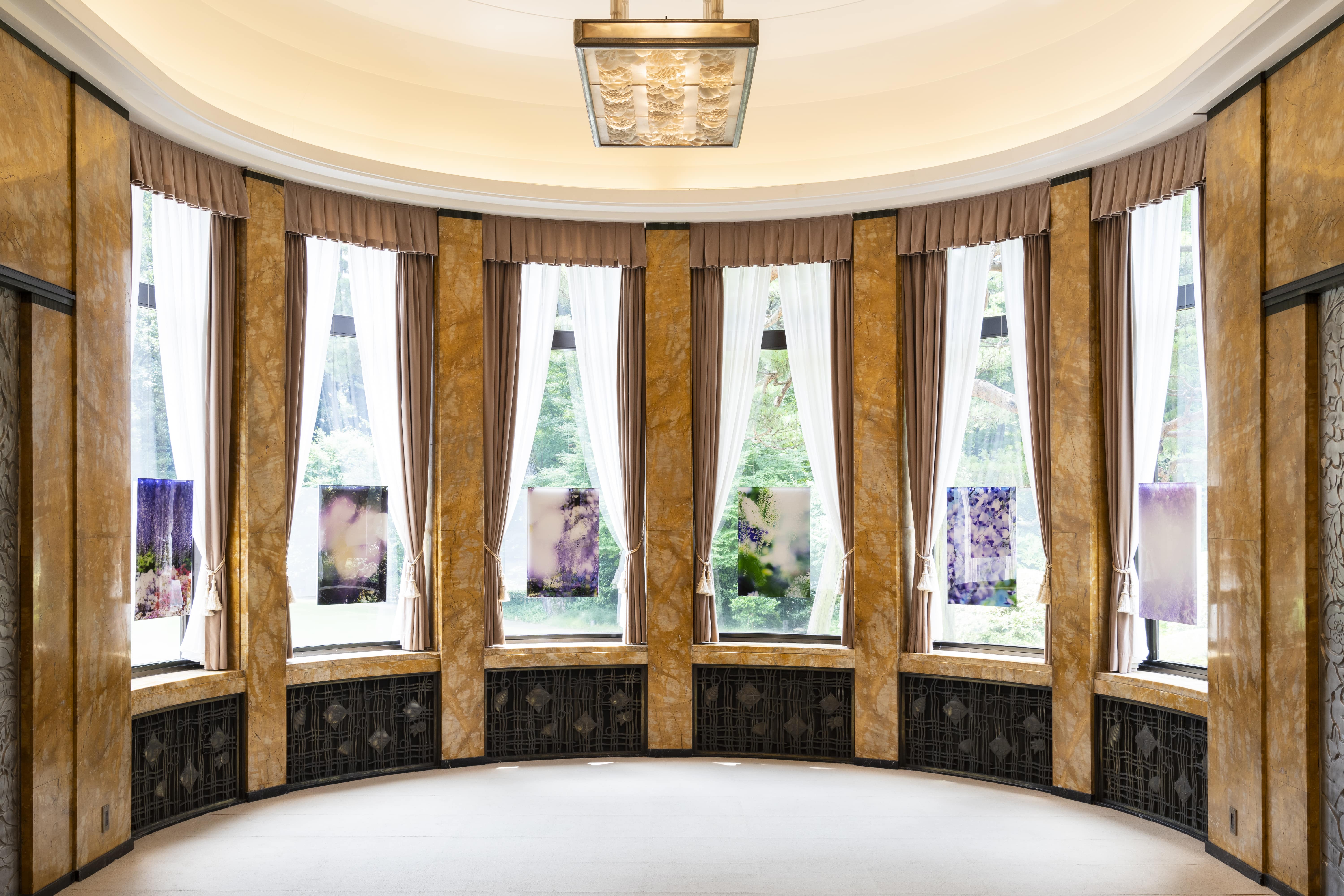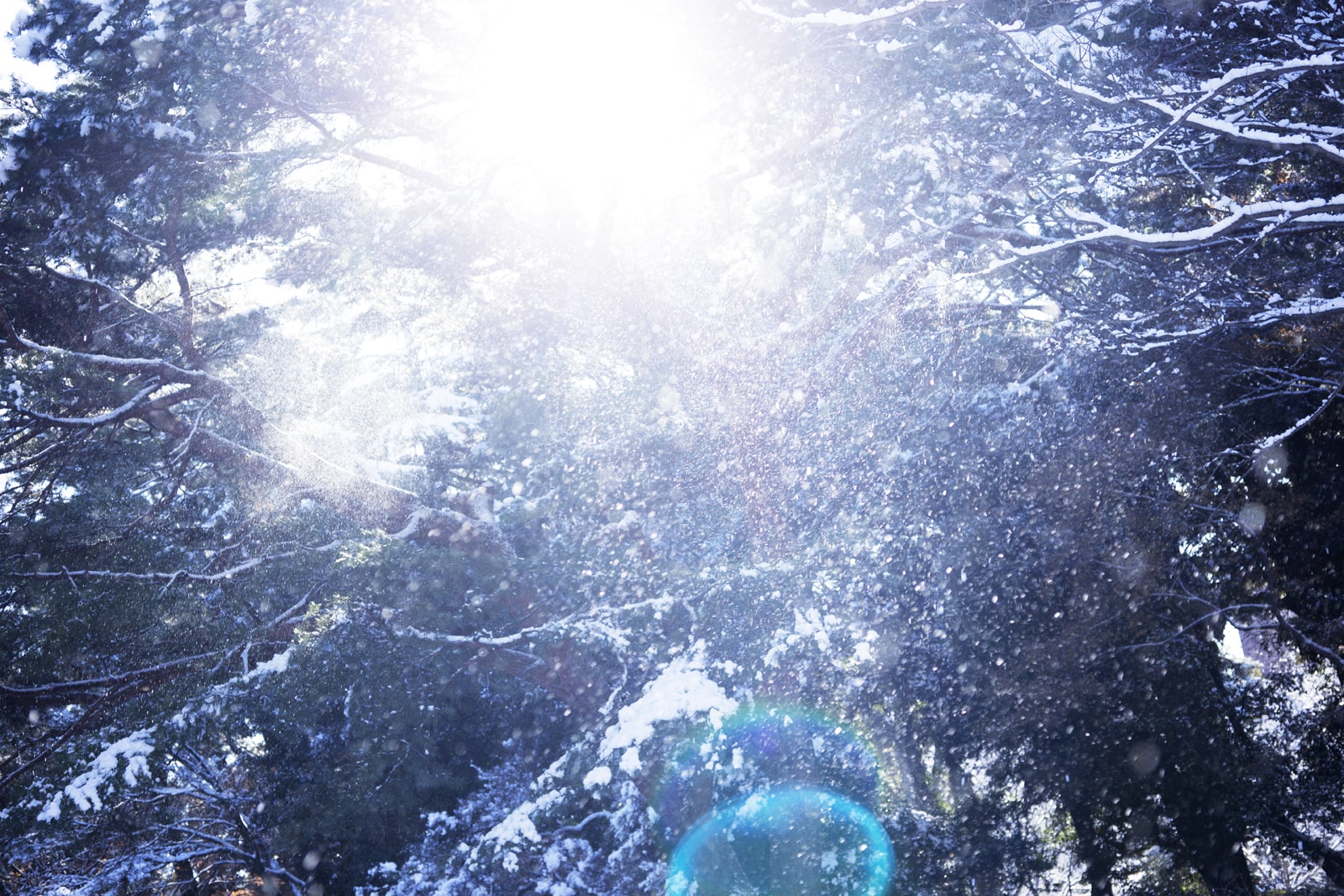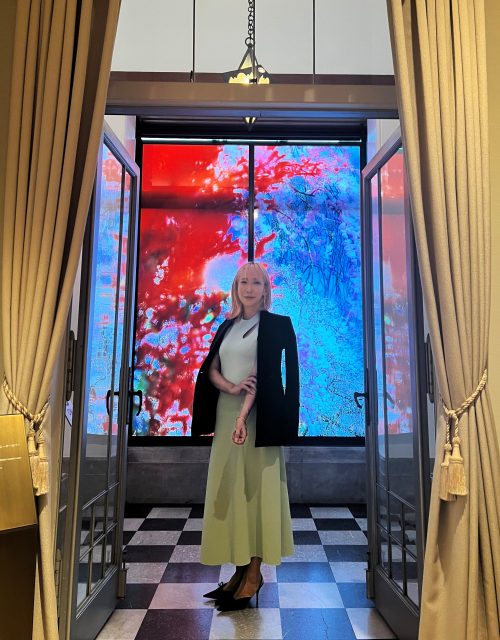The past year and a half has changed the way I see the world
![]()
![]()
事務局からのお知らせ
── What led you to create these colorful, light-infused (kosaishoku) works, which represent a new frontier in your artistic expression?
For a year and a half during the COVID-19 pandemic, I visited botanical gardens and other places around Japan to capture images of “moments that moved me,” as if I were completely obsessed. Without even realizing it, taking these photographs helped me to maintain a sense of stability in my mind during times when I felt as though I was losing my balance. During this period, my sensitivity to sensory stimuli was so heightened that I was truly a “sensory junkie.” Before I knew it, I had taken around 40,000 photographs. From these, I selected about 80 works for this exhibition.

When I take photographs, I rarely think, “this is how I’m going to shoot it,” and decide on a concept or direction at the outset. My approach to photography is “purer” than that, in that I simply converse with the subject and press the shutter when something moves my heart. That’s why, when I looked back at the photographs later, I noticed that many of them captured colors dancing in the light. All of my photographs told me what I was feeling at that moment, even before I was aware of my own state of mind.

Rather than having anything to do with the COVID-19 pandemic directly, these photographs are the result of me reacting sensitively to some sort of change in the atmosphere of the world that the pandemic triggered. There was a part of me that shot the photographs as if I were praying, searching for light in a world that felt closed in, to somehow preserve these beautiful yet fleeting moments and keep them forever. Now that I think about it, perhaps I was trying to validate the world, the future, and my hopes, by capturing the beauty that was all around me.
Although flower and plant photography has been an important theme in my work since my debut, this is the first time I have felt that my photographs have changed in such a significant way. I look back at my own photographs and am amazed at how, after taking photographs for so long, I can identify moments when the way I saw the world changed so much, as if I had been completely reborn in those moments.

Discovering a new face of the Teien Art Museum
── How does it feel to be holding an exhibition at the Tokyo Metropolitan Teien Art Museum?
The Tokyo Metropolitan Teien Art Museum is my favorite museum, and I have been coming here since I was in high school. In 2005, I participated in a plant-themed group exhibition at the museum called Artists’ Gardens, and I remember how happy I was to be able to exhibit my work in the “Winter Garden” (now closed) on the third floor. I am beyond happy to have the opportunity to exhibit my work here again.

The Teien Art Museum is not a “white cube” gallery. Instead, it’s a space where the building itself is like a piece of art. Memories are preserved in this space; it has a garden, and the building itself has its own distinct appeal. That’s why a main focus of this exhibition was how to make the best use of the strengths and beauty of this space and building in order to bring out the best features of the images on display and of the museum itself at the same time.
That said, because it is a special building that has been designated an Important Cultural Property, we were not allowed to drive a single nail into the wall—a challenge that does not apply at ordinary art museums. We had to use wires in as inconspicuous colors as possible, create double windows on which to install the works, and devise quite a few other workarounds while consulting with the museum curator.

Another major highlight of the exhibition is that we opened the curtains in the museum windows, which are usually closed, and displayed the images based on the location of the windows in each room so that visitors can view their light-infused hues awash in natural light. How the images look changes dramatically depending on the time of day and weather. We even changed the manner in which we opened the curtains to match the images. I hope visitors will notice details like these.
Another point I found interesting was that by exhibiting photographs in inconsistent lighting, we were doing the exact opposite of conventional exhibition methods. Isn’t photography all about capturing a fleeting moment of something that changes moment by moment? I think the photographs that capture moments of changing light tie in nicely with the ever-changing light outside the windows.

This exhibition is structured in such a way that if you walk past the exhibits in order, you will begin in spring, travel through the four seasons, and end up back in spring. The seasons also change as you ascend from the first to the second floor. Some of these photographs were taken here at the Teien Art Museum—the photograph of the pine tree on display in the Princess’ Sitting Room, for example. I took this photograph this year in January, the day after a heavy snowfall.

It started snowing heavily in the afternoon on the day before the shoot. The curator, Ms. Tamura, contacted me that evening and said, “The gardens look very nice right now, would you like to come over?” I immediately rushed over the next morning to take pictures. It was a beautiful, sunny day, and I was able to take a great shot of a beautiful moment when piles of snow fell down between the tree branches, glistening in the light.

We turned the Verandah, with its striking black and white checkered flooring, into a space reminiscent of an earthly paradise. The photographs were printed on transparent film and affixed to the windows, and they look really beautiful when the sunlight shines through from outside. I heard from Ms. Tamura, the curator, that people who visit this place to see the museum gardens end up viewing the exhibition as well, because they are curious about the photographs in the windows.
Normally, the curtains are closed to protect the artwork, so people who come here to enjoy the gardens have no idea what is being shown inside the museum. Conversely, with the curtains open, people who come to see the exhibition end up looking outside the windows, which leads them to go outside and walk around in the gardens. I’m happy to see that this exhibition has inspired people to do things they otherwise would not have thought to do.
A new video installation created as a team
A video installation called The Butterfly Season is showing in the Annex. Here, videos of seasonal flowers, starting in spring and transitioning through the seasons to spring again, are projected onto transparent screens that are arranged in multiple layers. As you weave in between the screens, you can view the flowers from the perspective of a butterfly flitting among the flowers.

The interesting thing about this piece is that the way the artwork looks changes completely when people step in between the screens. People often want to view regular video works in private, without strangers obstructing their view. This piece is different; stepping inside feels like walking through a forest. The scenery constantly shifts as other people move around in between the screens. I think it’s great that this piece can be enjoyed even with the movements of other people affecting the view.

I’ve produced video works in the past, but this is the first time I created something as part of a team. I shot the videos, but a producer helped me to create a concept for putting all the shots together. Based on that concept, a video editor edited the shots, and then we coordinated with another staff member to figure out how to stage the screens. Once the video was ready, we had another artist compose the music. It was a very empowering and valuable experience to collaborate with multiple people to create something while sharing our ideas with each other. Things I could not have done alone became possible with a team. I want to use the experience I gained from this in future projects.
By “filtering” through my past selves, I became able to see the world with fresh eyes

Visitors who have seen my “light-infused” photographs and videos often tell me that they feel a sense of kindness, gentleness, and healing in these works. More than anyone else, however, I am surprised at how my works have changed. These elements always existed within me, but many of the films and works I had been making were “edgy,” and having a certain “toxicity” was an important part of my style. But once I “filtered” them out, or rather, once I thought that it would be good to free myself from the need to be angry for some purpose, or to be edgy for the sake of being edgy, I stopped clinging to those qualities. This exhibition shows the results of me having let go of what I had been holding onto—what I had thought was my own form of expression—and confronting my own motifs wholeheartedly.
I am so happy that, at this age, I have become able to see the world again through completely fresh eyes. The fact that I have been able to show off my works in this way is due in large part to unique characteristics of the Teien Art Museum, and I hope that many people will come to see this exhibition.



